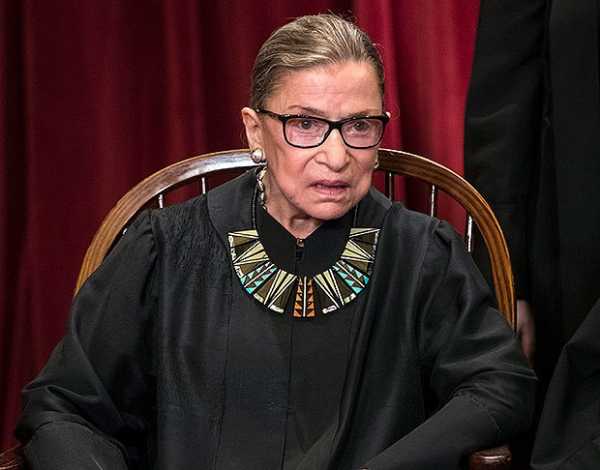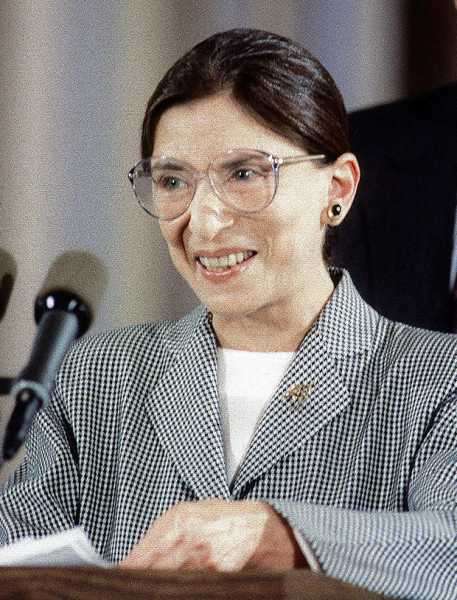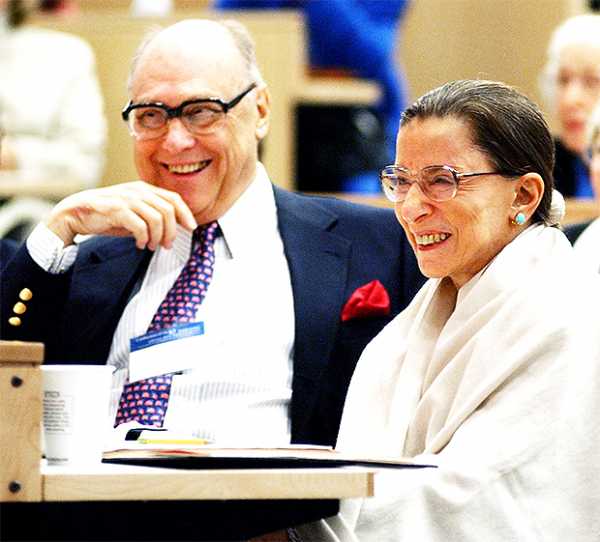
Up until her death in Sept. 2020, Ruth Bader Ginsburg helped pave the way for gender equality in the U.S. as a Supreme Court Justice. Learn more about this iconic figure in law.
Ruth Bader Ginsburg left a remarkable legacy in law and justice after passing away from Stage 4 pancreatic cancer on Sept. 18, 2020. Before her appointment to the U.S. Supreme Court in 1993, she had already made a name for herself by spearheading important litigation to prevent sex discrimination in the country.

Ruth Bader Ginsburg served on the U.S. Supreme Court between 1993-2020. (Photo Credit: AP)
Ginsburg — affectionately known as “RBG” — also battled through recurring health problems throughout a majority of her time on the Supreme Court, which we touch on more below. Now, learn more about Ruth’s rise to the Supreme Court, and the many contributions she has made in U.S. law:
1. RBG was the second woman ever to be appointed onto the U.S. Supreme Court. Former President Bill Clinton appointed her to the Supreme Court in 1993, where she remained up until her death 27 years later. Her 1993 appointment also marked the first Democratic Appointment since 1967, the year President Lyndon Lyndon B. Johnson nominated Thurgood Marshall for a seat on the Supreme Court.

Ruth Bader Ginsburg is pictured here, with former President Bill Clinton, after she was recently appointed to the U.S. Supreme Court in 1993. (Photo Credit: AP)
2. Ginsburg held an impressive reputation before her Supreme Court appointment. RBG was highly qualified for the role of Supreme Court Justice. Before the appointment in 1993, she received her Bachelor of Arts degree from Cornell University on a full scholarship in 1954, and continued her studies at another Ivy League School: Harvard Law. During this time, she was also taking care of her husband Martin Ginsburg, whom she met at Cornell and had been diagnosed with testicular cancer. Ginsburg eventually moved with Martin to New York, where she received her Bachelor of Laws from Columbia Law School in 1959.
Despite being armed with prestigious degrees, Ginsburg faced a field dominated by men. At the time, there were only two woman who had “ever served as federal judges,” according to Brittanica. Despite these odds, Ruth went on to land a clerkship under Edmund Palmieri, Judge of the U.S. District Court for the Southern District of New York, between 1959-1961. She then held professor of law positions at Rutgers University School of Law (1963-1972) and at Columbia Law School (1972-1980). She eventually became a fellow at the Center for Advanced Study in the Behavioral Sciences in Stanford, California between 1974-1980, and then a judge on the U.S. Court of Appeals for the District of Columbia Circuit between 1980-1993.

Ruth Bader Ginsburg delivers her first speech after her appointment to the Supreme Court in 1993. (Photo Credit: AP)
3. RBG was a champion for gender equality. In the 1970’s, Ginsburg shifted her focus in the fight against gender discrimination and founded the Women’s Rights Project through the American Civil Liberties Union (ACLU) in 1972. “During the 1970s, Ginsburg led the ACLU in a host of important legal battles, many before the Supreme Court, that established the foundation for the current legal prohibitions against sex discrimination in this country and helped lay the groundwork for future women’s rights advocacy,” the ACLU wrote in a statement, issued after Ginsburg’s death.
“By 1974, the Women’s Rights Project and ACLU affiliates had participated in over 300 sex discrimination cases; between 1969 and 1980, the ACLU participated in 66 percent of gender discrimination cases decided by the Supreme Court,” the statement reported. During this time, Ginsburg served as the General Counsel for the ACLU between 1973-1980.
By 1974, the Women's Rights Project and our affiliates had participated in over 300 sex discrimination cases.
Between 1969 and 1980, we participated in 66% of sex discrimination cases decided by the Supreme Court.
— ACLU (@ACLU) September 19, 2020
4. RBG battled serious health concerns for more than two decades. While fighting for justice, Ginsburg also fought against a myriad of health issues. She underwent surgery for colon cancer in 1999, and received chemotherapy treatment immediately afterwards. In 2009, she faced a new battle: a diagnosis for the early stage of pancreatic cancer. Although she was successfully treated for the cancer, nearly a decade later, the Justice suffered a fall and fractured three ribs in Nov. 2018. The very next month, Ginsburg underwent surgery to remove cancerous nodules from her left lung.
Although Ginsburg was deemed cancer-free by Jan. 2019, another tumor was found in August of that year (this time on Ginsburg’s pancreas), which required radiation treatment. While Ruth herself announced that she was “cancer-free” in an interview with CNN in Jan. 2020, Ginsburg sadly revealed in July that the cancer had returned. She had been receiving chemotherapy treatment since May of that year, she also revealed.

Ruth Bader Ginsburg with her husband, Martin Ginsburg, in 2003. (Photo Credit: AP)
5. RBG is survived by many immediate family members. Although Ginsburg’s husband of 56 years also passed away from cancer in 2010, she is survived by their two children: Jane C. Ginsburg, born in 1955, and James Steven Ginsburg, born in 1965. She is also survived by four grandchildren — Paul Spera, Clara Spera, Miranda Ginsburg, Abigail Ginsburg — and two step-grandchildren, Harjinder Bedi and Satinder Bedi. She also had one great-grandchild, Lucrezia Spera.
Sourse: hollywoodlife.com







